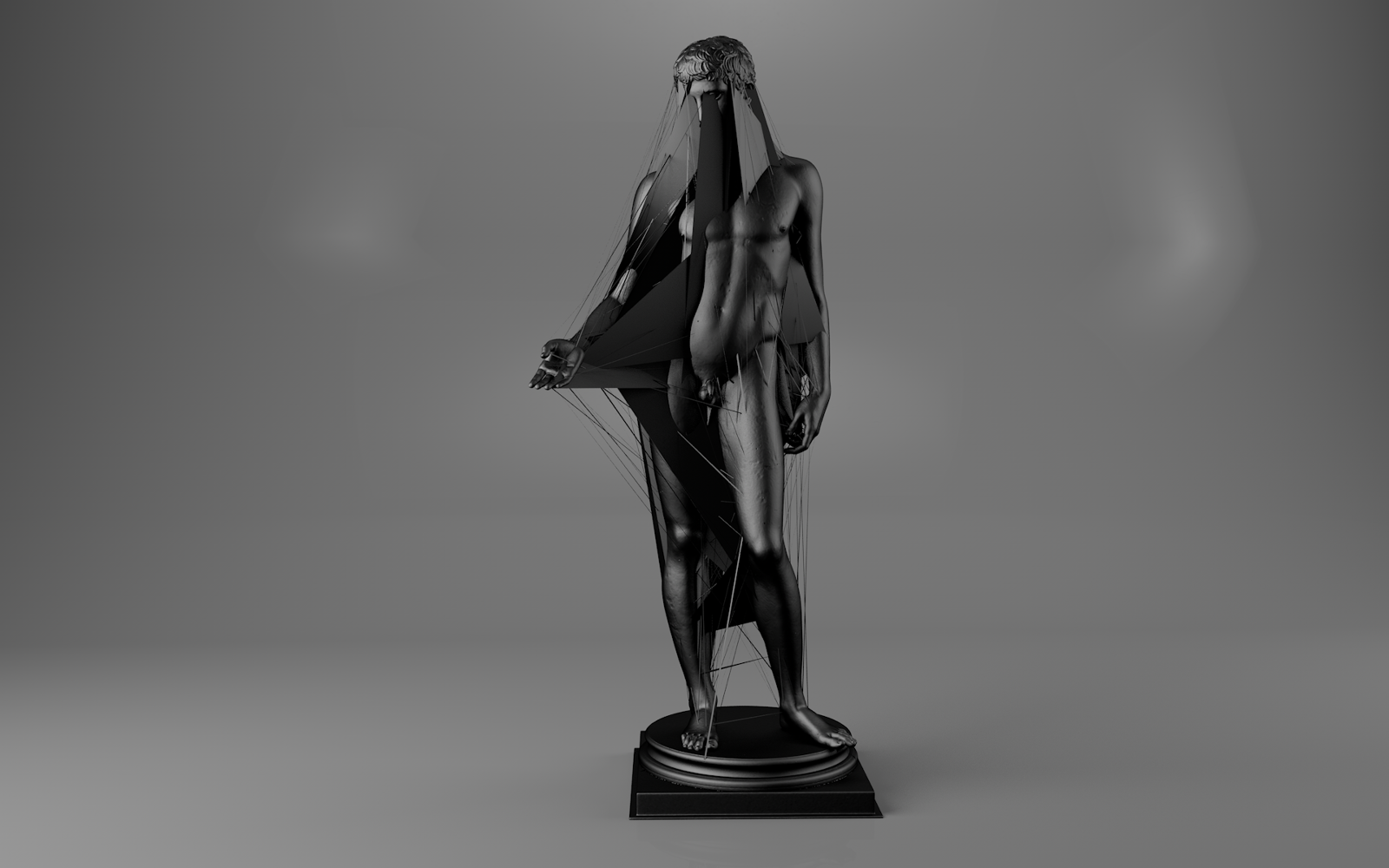(Dis-)Identify the .obj

[vc_row row_content_width=”grid” content_text_aligment=”” use_row_as_full_screen_section=”no”][vc_column][vc_custom_heading text=”Glitch studies.” font_container=”tag:h2|text_align:center” google_fonts=”font_family:Open%20Sans%3A300%2C300italic%2Cregular%2Citalic%2C600%2C600italic%2C700%2C700italic%2C800%2C800italic|font_style:600%20bold%20regular%3A600%3Anormal”][vc_custom_heading text=”
Keywords:
Failure, file format, electronic interruptions, glitch, new media, 3D models, source code, visualization of noise, manipulated data, social stereotypes, virtual space, IRL installation.
This practice questions the loss of human control in technology by exploring the transformation of virtual data, causing intended-but-unexpected errors in .obj files. Using different software editors to corrupt binary codes in 3D models and environments, the purpose is to understand and explore the potential of generated failure in distinct mediums.
It consists in manipulating several different algorithms from the source codes of different object files (.obj – a data-format that represents both polygonal objects and free-form objects in 3D) using hexadecimal code editors (HexFiend, HxD) and audio editors (Audacity), to corrupt several complex models from a 3D archive, such as abstract structures, classical human sculptures and nature based animals and elements.
” font_container=”tag:h5|text_align:justify” google_fonts=”font_family:Open%20Sans%3A300%2C300italic%2Cregular%2Citalic%2C600%2C600italic%2C700%2C700italic%2C800%2C800italic|font_style:300%20light%20regular%3A300%3Anormal”][/vc_column][/vc_row][vc_row row_content_width=”grid” content_text_aligment=”” use_row_as_full_screen_section=”no”][vc_column][vc_empty_space][vc_single_image image=”3989″ img_size=”full” alignment=”center”][vc_empty_space][/vc_column][/vc_row][vc_row row_content_width=”grid” content_text_aligment=”” use_row_as_full_screen_section=”no”][vc_column][vc_single_image image=”3987″ img_size=”full” alignment=”center”][vc_empty_space][/vc_column][/vc_row][vc_row row_content_width=”grid” content_text_aligment=”” use_row_as_full_screen_section=”no”][vc_column][vc_single_image image=”3985″ img_size=”full” alignment=”center”][vc_empty_space][/vc_column][/vc_row][vc_row row_content_width=”grid” content_text_aligment=”” use_row_as_full_screen_section=”no”][vc_column][vc_single_image image=”4829″ img_size=”full” alignment=”center”][vc_empty_space][vc_custom_heading text=”By exploring a new interpretation of failure in 3D art, this practice explores how data can be displaced and represented as new genres or new media, like unpredictable variations created during the transmission and transcoding of information by altering the original data and leaving a new form: the glitch.
As the result of transforming, transconding and corrupt original values, these 3D manipulated series, also represent the study of experimental practices of sound/visual relations, by integrating the visualization of sound with the same value of visual sonification, illustrating the emergence potential of organized failure.” font_container=”tag:h5|text_align:justify” google_fonts=”font_family:Open%20Sans%3A300%2C300italic%2Cregular%2Citalic%2C600%2C600italic%2C700%2C700italic%2C800%2C800italic|font_style:300%20light%20regular%3A300%3Anormal”][vc_empty_space][/vc_column][/vc_row][vc_row row_content_width=”grid” content_text_aligment=”” use_row_as_full_screen_section=”no”][vc_column][vc_video link=”https://vimeo.com/201576408″ align=”center”][vc_empty_space][/vc_column][/vc_row]